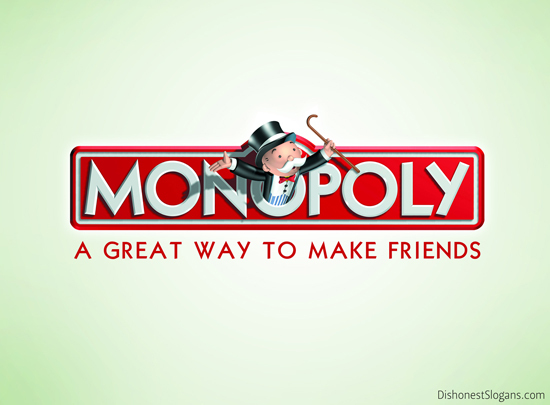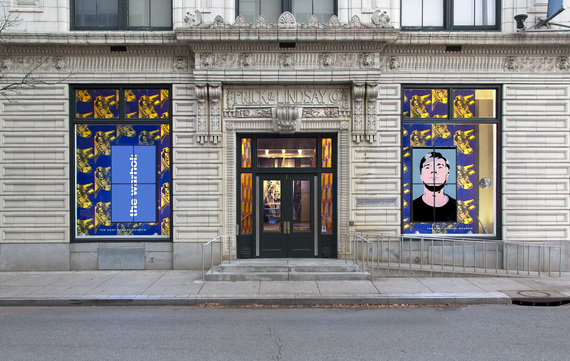When it comes to solo theater, I consider myself somewhat of a connoisseur. Besides my own piece Now That She's Gone, which I've performed all over the world, I've seen dozens of other one-person shows in a variety of locales, including Los Angeles, New York and Edinburgh. However, there is a marked disparity when it comes to how one-man shows and one-woman shows are perceived by both the public and reviewers. One-man shows are often viewed as vehicles for virtuoso acting, while one-woman shows are often viewed as an artistic "ghetto" for women over 35 who do not fit the impossible standards of a youth and male-obsessed culture.
You can't believe how many times I've been told by an audience member or the press, "I hate one-woman shows, but yours was great!" Invariably I discover the speaker had only seen one female solo show previously, and had quickly decided that all one-woman shows SUCK. Alas, it's not easy to be an actor anywhere, of any gender. That said, there are a flock of older male actors who also don't have a selection of great roles left for them, which may explain the trend of older actors taking on stories about revered public elders. And all of this brings me to... B. Franklin," written and performed eloquently by Robert Lesko. It is a piece of theater that is lovely on so many levels.
In the interest of full disclosure, I know Robert personally. If you think I might be biased because I know him, think again. It is often more difficult to see something a friend has done than to see theater from someone you don't know. It can be an excruciating experience to contemplate that the performance might be cringe-inducing, and then -- if it is -- what do you say when they ask how you liked it? "That was... really something!" "Oh yes, very interesting." "How did you remember all those lines?!" This has happened to me on several occasions, many of which the friend had requested (or even begged) me to attend, at which time I employ my Norwegian ability to avoid unpleasant topics. Anyway, back to Mr. Franklin.
Benjamin Franklin, the man and founding father, was a pain to many and a pleasure to more than a few. Lesko brought Franklin alive for me so much that I was able to forget that I was watching a play. Robert also accomplished something that many playwrights fail to do for male characters: I felt like I'd spent an evening with a friend rather than with an important historical figure. That is due to Robert's truly fine skills as an actor and performer. Huzzah!
Gross generalization alert! Many women's pieces tend to be personal. I believe that is partially because there are fewer historical women that people would even recognize, and that many of us gals are in the middle of making history ourselves. Men's shows tend to keep personal feelings hidden behind "real world" accomplishments. B. Franklin is a blend of both the personal and the political, the banner motto of second wave feminism. The balance Lesko has achieved, both as an actor and writer, is truly remarkable.
B. Franklin also manages to maintain the very real visibility and impact that women and family had on Franklin's life. He maintained the longest-standing correspondence with his beloved sister Jane, who is also the subject of a newly released biography called Book of Ages: The Life and Opinions of Jane Franklin by Jill LePore. Let's just say that Jane's having had 12 children certainly kept her busy. Benjamin was just as fertile, except his "fertility" was focused on an intellectual and public life. Amazingly, despite his love and respect for Jane as a person and as an intellectual equal, Ben didn't even mention Jane in his autobiography. Such was the time when the personal was not the political, and the spheres of feminine and masculine had very little overlap in the public discourse. Books were mostly part of the masculine world; thus Jane's many opinions and sharp mind didn't make it into her own brother's book about his life.
The play was particularly touching for me as I watched an octogenarian reflecting on what was really important to him: his accomplishments, his falling out with his beloved son, and yes... his errors. One would not expect anything less from Poor Richard, who besides his almanac was a man of distinction in science, philosophy and homilies.
The entire production is highly commendable. The direction by Bjorn Johnson is superb; the dramaturgy by Kathie Lesko, sublime; the scenic design by Stephanie Kerley Schwartz was spot-on; the lighting design by Stacey Abrams was both striking and nuanced; I was fascinated by the costuming by A. Jeffrey Schoenberg; the sound design by Corwin Evans was aurally delicious; Ina Russell and Bruce Dickinson's props were excellent; the wig and make-up by April Metcalf worked beautifully. In other words, every aspect was just right. Kudos to producer Laura Hill, who put together this wonderfully talented team of technicians and artists.
This is one show you've got to see before it closes!
You can't believe how many times I've been told by an audience member or the press, "I hate one-woman shows, but yours was great!" Invariably I discover the speaker had only seen one female solo show previously, and had quickly decided that all one-woman shows SUCK. Alas, it's not easy to be an actor anywhere, of any gender. That said, there are a flock of older male actors who also don't have a selection of great roles left for them, which may explain the trend of older actors taking on stories about revered public elders. And all of this brings me to... B. Franklin," written and performed eloquently by Robert Lesko. It is a piece of theater that is lovely on so many levels.
In the interest of full disclosure, I know Robert personally. If you think I might be biased because I know him, think again. It is often more difficult to see something a friend has done than to see theater from someone you don't know. It can be an excruciating experience to contemplate that the performance might be cringe-inducing, and then -- if it is -- what do you say when they ask how you liked it? "That was... really something!" "Oh yes, very interesting." "How did you remember all those lines?!" This has happened to me on several occasions, many of which the friend had requested (or even begged) me to attend, at which time I employ my Norwegian ability to avoid unpleasant topics. Anyway, back to Mr. Franklin.
Benjamin Franklin, the man and founding father, was a pain to many and a pleasure to more than a few. Lesko brought Franklin alive for me so much that I was able to forget that I was watching a play. Robert also accomplished something that many playwrights fail to do for male characters: I felt like I'd spent an evening with a friend rather than with an important historical figure. That is due to Robert's truly fine skills as an actor and performer. Huzzah!
Gross generalization alert! Many women's pieces tend to be personal. I believe that is partially because there are fewer historical women that people would even recognize, and that many of us gals are in the middle of making history ourselves. Men's shows tend to keep personal feelings hidden behind "real world" accomplishments. B. Franklin is a blend of both the personal and the political, the banner motto of second wave feminism. The balance Lesko has achieved, both as an actor and writer, is truly remarkable.
B. Franklin also manages to maintain the very real visibility and impact that women and family had on Franklin's life. He maintained the longest-standing correspondence with his beloved sister Jane, who is also the subject of a newly released biography called Book of Ages: The Life and Opinions of Jane Franklin by Jill LePore. Let's just say that Jane's having had 12 children certainly kept her busy. Benjamin was just as fertile, except his "fertility" was focused on an intellectual and public life. Amazingly, despite his love and respect for Jane as a person and as an intellectual equal, Ben didn't even mention Jane in his autobiography. Such was the time when the personal was not the political, and the spheres of feminine and masculine had very little overlap in the public discourse. Books were mostly part of the masculine world; thus Jane's many opinions and sharp mind didn't make it into her own brother's book about his life.
The play was particularly touching for me as I watched an octogenarian reflecting on what was really important to him: his accomplishments, his falling out with his beloved son, and yes... his errors. One would not expect anything less from Poor Richard, who besides his almanac was a man of distinction in science, philosophy and homilies.
The entire production is highly commendable. The direction by Bjorn Johnson is superb; the dramaturgy by Kathie Lesko, sublime; the scenic design by Stephanie Kerley Schwartz was spot-on; the lighting design by Stacey Abrams was both striking and nuanced; I was fascinated by the costuming by A. Jeffrey Schoenberg; the sound design by Corwin Evans was aurally delicious; Ina Russell and Bruce Dickinson's props were excellent; the wig and make-up by April Metcalf worked beautifully. In other words, every aspect was just right. Kudos to producer Laura Hill, who put together this wonderfully talented team of technicians and artists.
This is one show you've got to see before it closes!
Fridays and Saturdays at 8pm & Sundays at 2pm
At the Stephanie Feury Studio Theatre
5636 Melrose Ave. Los Angeles CA, 90038 (at Larchmont)
Running Through Sunday, April 27th
Tickets are $25 via BrownPaperTickets
The Production's Facebook page































































